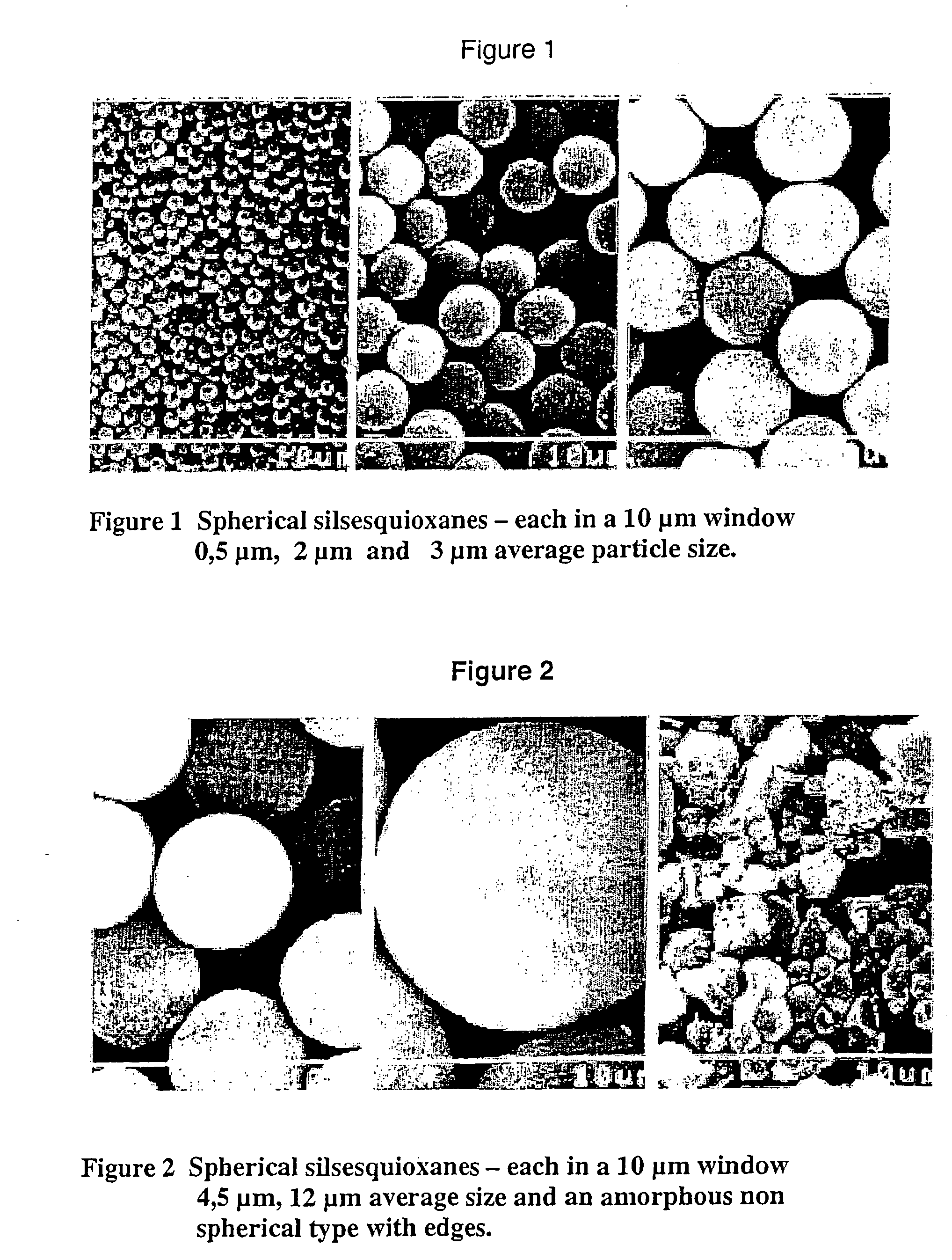Use of an aqueous coating composition for the manufacture of surface coatings of seals
a technology of surface coating and coating composition, which is applied in the direction of mechanical equipment, transportation and packaging, other chemical processes, etc., can solve the problems of high cost of flotation process, mechanical weakness, and addition of several steps to the manufacturing process
- Summary
- Abstract
- Description
- Claims
- Application Information
AI Technical Summary
Benefits of technology
Problems solved by technology
Method used
Image
Examples
example 1
Preparation of the Polyol Solution
[0119] 74.2 parts of an equal mixture of two polyols (Bayderm Finish and Aquaderm Matting LH), 3.5 part of a black pigment paste (Euderm Schwarz DB), 1.7 parts of a leveling additive (Slipadditive 2229W), 0.14 parts of a polyethersiloxane flow additive, 0.06 parts of a defoamer were mixed thoroughly until homogeneous.
[0120] Then 12 parts of a polyalkylsiloxane powder, prepared from methyltrimethoxysilane by hydrolysis according to the method of U.S. Pat. No. 4,528,390 example 1, with a median particle size of 6 microns was added and dispersed using a dissolver blade stirrer until homogeneous.
[0121] Finally, 2.4 parts of 10% emulsion of a dibutyltin dicarboxylate catalyst emulsion (Baysilone Paint Hardener LH10) and 3 parts of a 30% emulsion of a chlorinated polyolefin as adhesion additive and 4.75 parts of deionized water were added and mixed until homogeneous.
[0122] The polyol solution was a storage stable, homogeneous dispersion with a specif...
example 2
[0127] The polyol coating dispersion of example 1 was prepared in the same way but the aqueous protective coating solution was prepared by mixing thoroughly 92 parts of the above polyol solution with 10 parts of a freshly prepared 40% dispersion of a solventless hydrophilic aliphatic polyisocyanate (Bayhydur N 3100 with an NCO content of 17,2%) in water under mild shear and filtration through a 200 micron filter cloth.
[0128] The coating solution was applied by spray gun to EPDM rubber sheets, air dried and cured as in Example 1. The coated and cured EPDM sheets gave comparable results as in Example 1.
example 3
[0129] The polyol coating dispersion of example 1 was prepared in the same way but using only 6 parts of the same polyalkylsiloxane powder instead of 12 parts.
[0130] The aqueous protective coating dispersion was prepared by mixing thoroughly 86 parts of the above polyol dispersion with 10 parts of hydrophilic aliphatic isocyanate solution under mild shear and filtration through a 200 micron filter cloth.
[0131] The coating dispersion was applied by spray gun to EPDM rubber sheets, air dried and cured as in Example 1. The coated and cured EPDM sheets gave the following results of Tab.2:
TABLE 2PropertyTest methodResult example 3AppearanceManualmatt, homogeneousFeelManualsmooth, softCross-CutDIN 531510 (pass)AdhesionAbrasionAATCC CM-5 5000 cyclesOK (pass)resistanceCrock Meter against glassCoefficient ofDIN 53375 against glass0.35FrictionStorage stability,3 months at 20° C.OKRT
[0132] The coating dispersions of the current example exhibit good storage stability. The cured coating is s...
PUM
| Property | Measurement | Unit |
|---|---|---|
| softening point | aaaaa | aaaaa |
| particle size | aaaaa | aaaaa |
| mean particle diameter | aaaaa | aaaaa |
Abstract
Description
Claims
Application Information
 Login to View More
Login to View More - R&D
- Intellectual Property
- Life Sciences
- Materials
- Tech Scout
- Unparalleled Data Quality
- Higher Quality Content
- 60% Fewer Hallucinations
Browse by: Latest US Patents, China's latest patents, Technical Efficacy Thesaurus, Application Domain, Technology Topic, Popular Technical Reports.
© 2025 PatSnap. All rights reserved.Legal|Privacy policy|Modern Slavery Act Transparency Statement|Sitemap|About US| Contact US: help@patsnap.com

